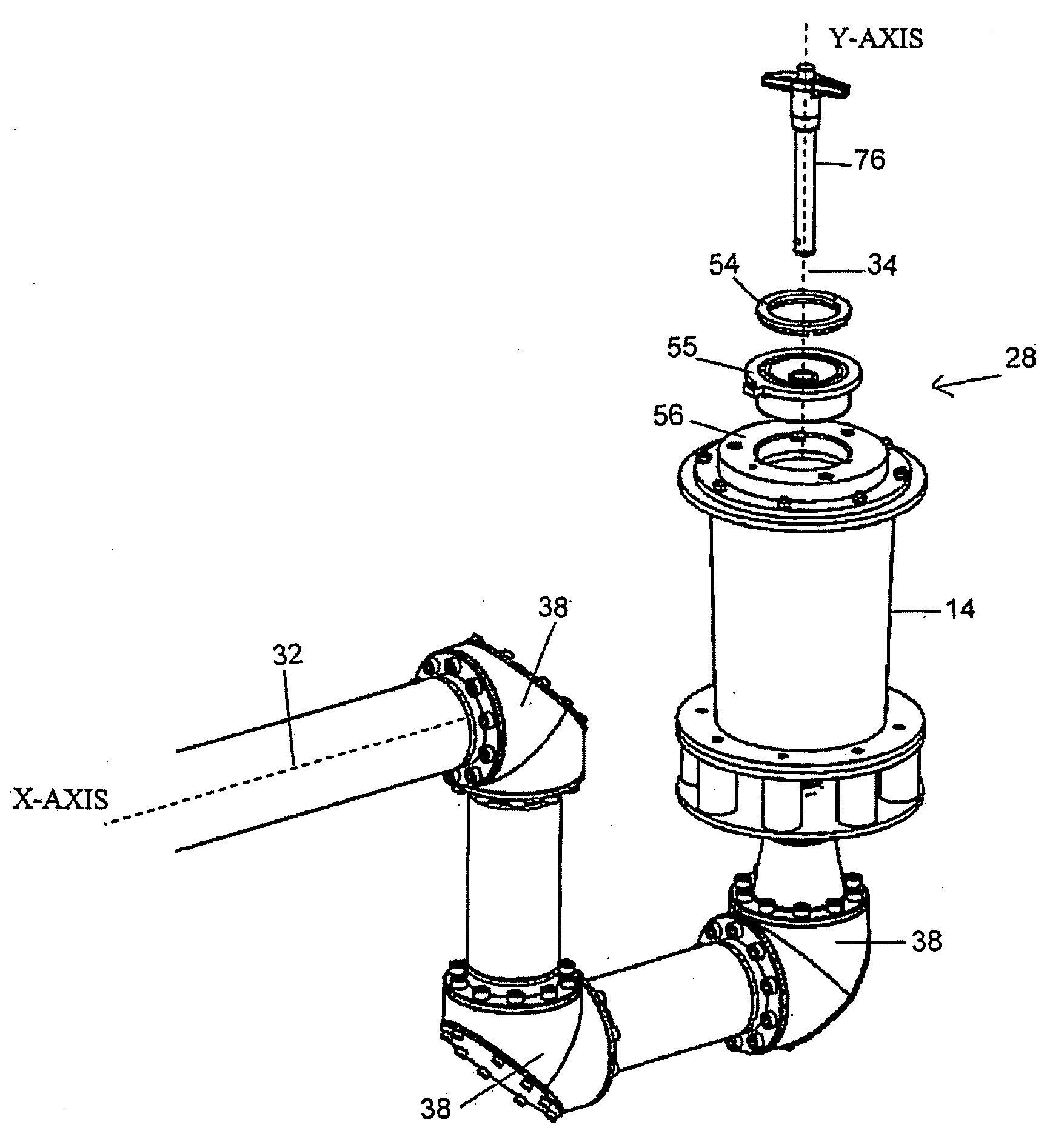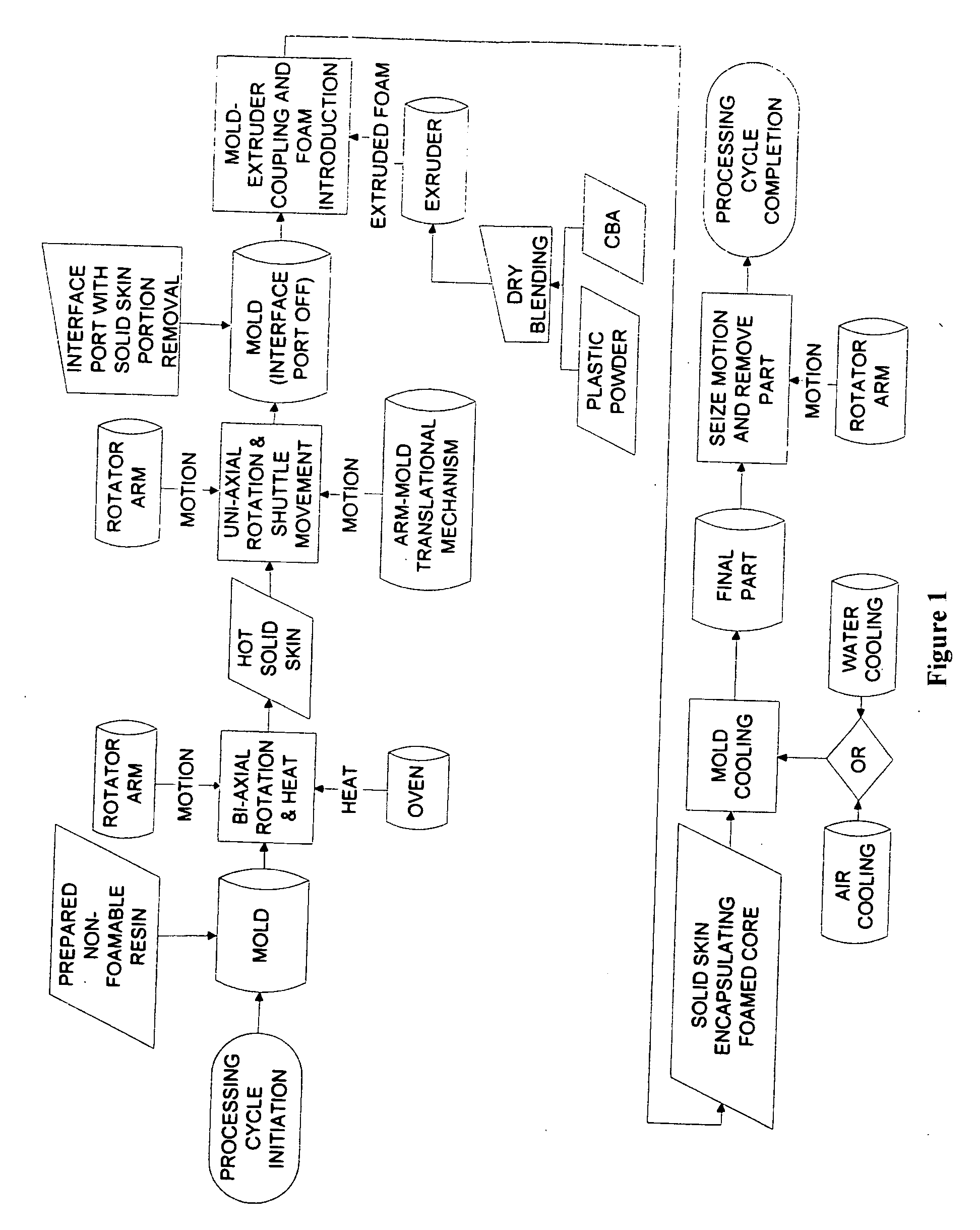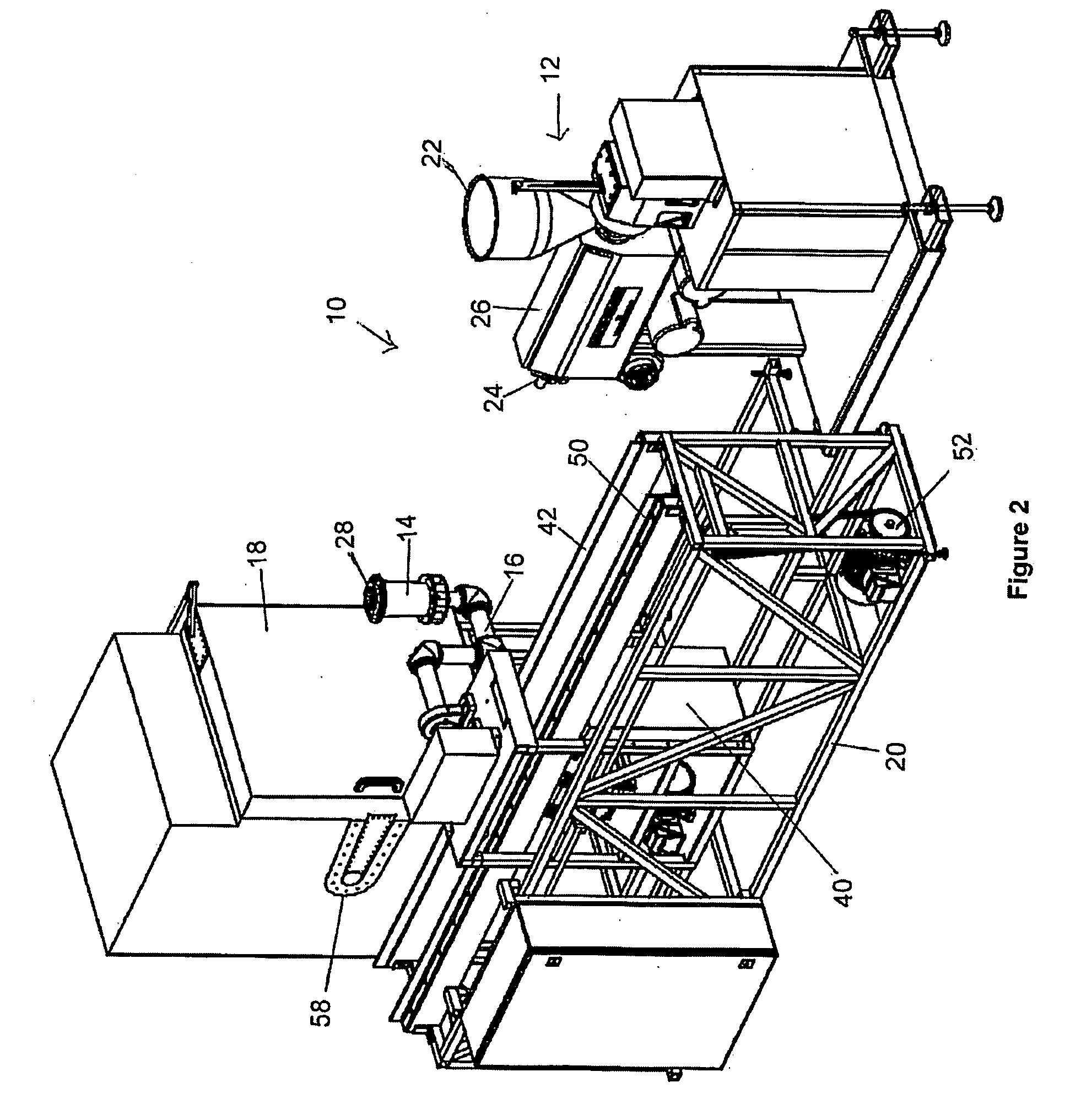However, in addition to being extremely
time consuming and very energy-intensive, due to the unavoidable thermal gradient formed across the mold during both heating and cooling, the single-charge technique suffers from difficulties of controlling the timely formation of the
solid skin versus the formation of a foamed core or layer of controlled density.
This is often demonstrated through a premature
decomposition of the CBA compounded into the foamable
pellets, thereby causing poor
skin thickness uniformity, foam invasion / protrusion into the skin, undesired coarse-celled foam morphologies and a weak skin-foam interface.
The rotational molding technology is inherently disadvantaged by very lengthy and energy-intensive processing cycles, which are even further aggravated when processing integral-skin plastic foams, due to the insulative effect of the developed foam layer or core within the mold.
Rotational molding production cycles are, undesirably, lengthy because the plastic material charged into the bi-axially rotating mold has to be indirectly heated from
room temperature to beyond its
melting point (which is traditionally conducted by using
convection-based heath transfer while implementing an oven) and then cooled back to room temperature (which is traditionally achieved by forced
airflow and / or water sprinklers) until it eventually solidifies.
In addition, the foam developed within the mold during processing produces an undesired insulative effect which slows down and practically precludes any real-time
process control of both the heating and cooling segment of the cycle even further.
However, the control of the
cell size of rotationally foam molded cellular structures formed based on the use of a chemical
blowing agent (CBA) might be often aggravated by some inherent limitations that are unique to the rotational molding process such as lengthy processing cycles, which result in coarser-celled final cellular structures being yielded.
Although the single-charge processing concept is beneficial for improving the
efficacy of the molding process and the structural homogeneity of the moldings, it certainly suffers from inherently aggravating the fulfillment of crucial processing goals such as: (i) the execution of the adhesion of the non-foamable
thermoplastic resin to the internal surface of the mold that should always take place prior to the thermal activation of the foaming resin (thereby avoiding skin protrusions), and (ii) obtaining a
solid skin layer with a uniform thickness.
This study clarified why in rotationally foam molded cellular structures based on the use of a CBA, a fine-celled morphology has been closely approached, but it has not been actually achieved yet.
Thus, it was clearly indicated that it would be very difficult to generate the preferred kind of bubbles (fine-celled) in rotational foam molding unless the duration of the heating portion of the process is dramatically reduced, or else.
Particularly, very limited research has been conducted on the processing of integral-skin cellular polymeric composites in rotational foam molding, while even a smaller body of literature deals with the study of the single-charge rotational foam molding technology.
Furthermore, while several authors have done an admirable job in studying the formation and removal of unwanted bubbles in conventional rotational molding, other than a few recent studies, no substantial work has been performed yet to explain the mechanisms governing the CBA-blown production and retention of controlled size bubbles and their lifespan in non-pressurized non-isothermal
polymer melts, such as in rotational foam molding.
Likewise, compared to PE foams, very little research has been accomplished to date on the production of PP foams in rotational foam molding.
 Login to View More
Login to View More  Login to View More
Login to View More 


